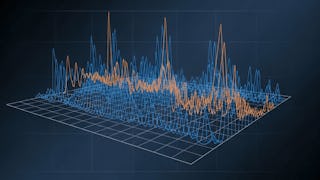In this course you learn to build, refine, extrapolate, and, in some cases, interpret models designed for a single, sequential series. There are three modeling approaches presented. The traditional, Box-Jenkins approach for modeling time series is covered in the first part of the course. This presentation moves students from models for stationary data, or ARMA, to models for trend and seasonality, ARIMA, and concludes with information about specifying transfer function components in an ARIMAX, or time series regression, model. A Bayesian approach to modeling time series is considered next. The basic Bayesian framework is extended to accommodate autoregressive variation in the data as well as dynamic input variable effects. Machine learning algorithms for time series is the third approach. Gradient boosting and recurrent neural network algorithms are particularly well suited for accommodating nonlinear relationships in the data. Examples are provided to build intuition on the effective use of these algorithms.


了解顶级公司的员工如何掌握热门技能

积累特定领域的专业知识
- 向行业专家学习新概念
- 获得对主题或工具的基础理解
- 通过实践项目培养工作相关技能
- 获得可共享的职业证书

该课程共有8个模块
In this module you get an overview of the courses in this specialization and what you can expect.
涵盖的内容
1个视频2篇阅读材料
In this module, you get an idea of the scope of this course and learn to use SAS Viya for Learners to do the practices in the course.
涵盖的内容
1个视频3篇阅读材料1个应用程序项目
This module reviews fundamental time series ideas. You learn about the basic components of systematic variation in time series data and some simple model specifications, such as the autoregressive order one and the random walk. You also learn about Exponential smoothing models or ESMs, selecting a champion ESM, and generating forecasts on time series.
涵盖的内容
11个视频2个作业1个应用程序项目
This module has four parts. The first part describes traditional models for stationary data: Auto Regressive Moving Average or ARMA models. The second part describes how the ARMA framework is generalized to accommodate trend variation. This involves integration, and results in the ARIMA model. The third part describes how the ARIMA model is adapted to handle seasonal variation in the data. The fourth and final part of the module introduces the dynamic regression or ARIMAX model and describes concepts related to identifying transfer function components and specifying ARIMAX models.
涵盖的内容
26个视频2个作业1个应用程序项目
In this module, we combine the worlds of time series and Bayesian analysis. We begin with a brief review of Bayesian analysis. We then explore how to incorporate autoregressive, seasonal, and exogenous components in a Bayesian time series. We conclude with a discussion on Bayesian scoring and posterior predictive distributions.
涵盖的内容
10个视频8个作业1个应用程序项目
In this module you learn how to use SAS machine learning tools to forecast individual time series. You learn to prepare the time series data for use with the machine learning tools, and how to build and score forecasting models using these tools. We focus on gradient boosting and recurrent neural network models and discuss when it would be useful to use these methods.
涵盖的内容
8个视频1篇阅读材料5个作业1个应用程序项目
This module describes how forecasts that are generated externally to the forecasting system can be accommodated in SAS Visual Forecasting. We'll use external forecasts to create a combined or ensemble forecast that has the potential to improve forecast precision relative to the constituent, external forecasts. This module concludes with a discussion of hybrid model forecasts that combine traditional and machine learning approaches to forecasting.
涵盖的内容
9个视频1个作业2个应用程序项目
涵盖的内容
1个作业
获得职业证书
将此证书添加到您的 LinkedIn 个人资料、简历或履历中。在社交媒体和绩效考核中分享。
提供方
从 Data Analysis 浏览更多内容
 状态:免费试用
状态:免费试用Illinois Tech
人们为什么选择 Coursera 来帮助自己实现职业发展




常见问题
To access the course materials, assignments and to earn a Certificate, you will need to purchase the Certificate experience when you enroll in a course. You can try a Free Trial instead, or apply for Financial Aid. The course may offer 'Full Course, No Certificate' instead. This option lets you see all course materials, submit required assessments, and get a final grade. This also means that you will not be able to purchase a Certificate experience.
When you enroll in the course, you get access to all of the courses in the Specialization, and you earn a certificate when you complete the work. Your electronic Certificate will be added to your Accomplishments page - from there, you can print your Certificate or add it to your LinkedIn profile.
Yes. In select learning programs, you can apply for financial aid or a scholarship if you can’t afford the enrollment fee. If fin aid or scholarship is available for your learning program selection, you’ll find a link to apply on the description page.
更多问题
提供助学金,









